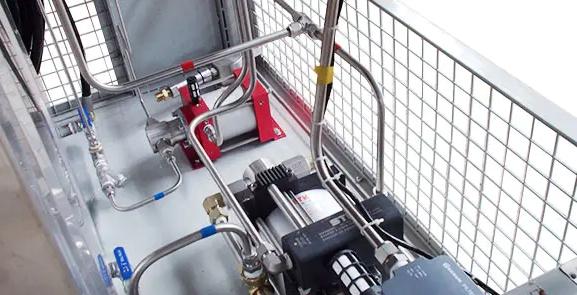Pneumatic pressure test benches, equipped with advanced features like PC recorders and liquid storage tanks, are essential tools in various industries, from automotive manufacturing to aerospace and beyond. These test benches provide the means to subject components to controlled pressure conditions for testing and validation.
However, operating pneumatic pressure test benches comes with inherent risks, and safety protocols are of utmost importance to protect operators, equipment, and the integrity of the testing process. This article will delve into the significance of safety protocols and the need for comprehensive operator training when using pneumatic pressure test benches with PC recorders and liquid storage tanks.
Importance of Safety Protocols
Operator Safety:
The primary concern in any testing environment is the safety of operators. Pneumatic pressure test benches with PC recorders and liquid storage tanks involve the use of compressed air and potentially hazardous liquids, which can be potentially hazardous if not handled properly. Safety protocols are designed to protect operators from accidents, such as over-pressurization, leaks, or sudden releases of air pressure or liquids.
Equipment Protection:
Proper safety measures can prevent damage to the pneumatic pressure test bench and associated components. Overloading or misuse of the equipment can result in costly repairs or replacements, which can be avoided through adherence to safety protocols.
Data Integrity:
Accurate testing and data collection, facilitated by PC recorders, depend on the consistent and controlled application of pressure and liquid storage. Deviations caused by operator error or equipment mishandling can compromise the reliability of test results. Safety protocols help maintain data integrity.

Key Safety Protocols for Pneumatic Pressure Test Benches
- Proper Ventilation: Ensure the test area is well-ventilated to prevent the buildup of potentially harmful fumes, especially when working with high-pressure gases and liquids. Adequate ventilation reduces the risk of accidents due to leaks or pressure releases.
- Pressure Limitation: Establish and communicate clear pressure limitations for specific tests, considering the presence of liquid storage. Operators should never exceed these limits, as it can lead to equipment damage, leaks, or ruptures.
- Regular Inspection: Conduct routine inspections of the pneumatic pressure test bench and associated components to identify wear, tear, or damage, including the liquid storage tank. Any compromised components should be repaired or replaced promptly.
- Safety Equipment: Provide operators with appropriate safety equipment, such as gloves, goggles, and hearing protection, depending on the specific testing conditions involving liquids. Respiratory protection may be necessary when working with certain gases.
- Emergency Shutdown Procedures: Ensure operators are familiar with emergency shutdown procedures in case of unexpected events. They should know how to depressurize the system, secure the equipment, and address potential liquid spills.
Comprehensive Operator Training
- Equipment Familiarity: Comprehensive training should cover the specific pneumatic pressure test bench with PC recorder, liquid storage tank, and other associated features in use. Operators should be familiar with the bench's features, functions, and capabilities.
- Pressure Control: Operators must understand how to set and control pressure accurately and safely, considering the presence of liquid storage. This includes proper adjustment and monitoring of pressure levels during testing.
- Troubleshooting: Operator training should include troubleshooting skills to identify and address common issues, such as leaks, irregular pressure readings, or equipment malfunctions, especially in the context of liquid storage.
- Data Handling: Training should emphasize the importance of accurate data recording and management using PC recorders. Operators should know how to properly document test results and interpret the data, including results related to liquid storage tests.
- Safety Training: Comprehensive safety training is crucial, considering both pressure and liquid storage. Operators should understand the potential risks, how to mitigate them, and the importance of adhering to safety protocols.
Conclusion
Safety protocols and operator training are integral components of working with pneumatic pressure test benches with PC recorders and liquid storage tanks. These measures ensure the safety of operators, protect equipment and maintain the integrity of test results. Operators who are well-trained and adhere to established safety protocols can confidently and effectively use these advanced pneumatic pressure test benches, facilitating accurate and secure testing in various industries.
